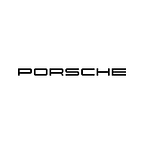Porsche and the Future of Automotive Experiences
Over the last decade, the worlds of automotive and tech have become almost inseparable. Cars are now equipped with a multitude of technologies — but they are more than just computers on wheels. They offer sophisticated digital user experiences. As digitization continues its advance, vehicles are increasingly judged by the quality of the in-car experience. The experience of being in the car and interacting with it is what matters!
The beginnings of UI/UX at Porsche
Almost two decades ago Porsche launched what is now the UI/UX (user interface and user experience) department. When I started my job there in 2003, the department consisted of just two people, a colleague and me. Our key focus was the design and accelerated implementation of digital technologies. For example, we were able to convince the board to invest in a digital center console. In the following years, Porsche became the first German carmaker to adopt touchscreen technology.
The UI/UX display and controls department has grown from a two-man research effort into a multifaceted, interdisciplinary team, which consists of engineers, computer scientists, designers, psychologist, media scientists, linguists and sinologists. Today, 70 people work in the department. Together, we are focused on developing and creating sophisticated user interfaces and premium user experiences.
Our mission is now to build the next generation of automotive experiences. We do this through using agile working methods, pursuing a holistic design approach and anticipating future trends and customer needs. Currently, we are working on the UI and UX design for our 2027 to 2030 models.
Creating a Unique User Experience
When it comes to UI/UX design, it is important to find a balance between functionality and simplicity. It’s not about cramming as much screens and features as possible into the car. Often, less is more. At Porsche, we want to provide a premium user experience that is intuitive, enjoyable and centered around the passenger(s). As our CEO, Oliver Blume, once said, “We are not interested in digitalizing at any cost, nor do we do it for its own sake. We only digitalize where doing so will benefit our customers. And we only do it if they want us to.” To make driving as enjoyable and effortless as possible, we combine innovative technologies with a deep understanding of our customers’ needs.
Indeed, as UI/UX designers, it’s our job to know our users and anticipate their specific needs, habits and preferences. Only then can we create meaningful user experiences. Our aim is to create a seamless user experiences for a multitude of customers. To that end, we envision different use cases and create different personas. Understanding all these different user perspectives and scenarios helps us to take into account the different requirements and better answer our customers’ needs.
Although each design process is unique and shaped by different dynamics, we usually work with cardboard, wood and clay models in the beginning. Those models help us to get a three-dimensional sense of our sketches and better understand distances, forms and proportions. We also use computer-aided design to develop our ideas in all stages of the design process, of course.
As already mentioned, it is not always easy to find a compromise between competing priorities and constraints. For example, on the one hand, we want to keep distractions to a minimum and reduce complexity. On the other hand, we want to incorporate the latest technologies in our solutions build engaging user interfaces and stimulating environments. Customer and stakeholder feedback is therefore vital for the design process. To analyze the feasibility of our designs, and to continually improve them, we do a lot of testing and prototyping.
Welcome to the Future: User Experience in the Age of Electromobility
For the Taycan, our new electric sports car, it was our goal to build an iconic sports car cockpit that would do justice both to the tradition of our brand and to the requirements of the age of electromobility. Using a holistic design approach, we developed the cockpit from the ground up. It is all digital and includes a newly designed instrument cluster, dashboard and infotainment system.
We replaced almost all physical buttons, dials and knobs with digital touchpads. The buttons on the steering wheel, the hazard lights switch, and the clock on top of the dashboard are the only remaining relics of the analogue world. Design and development of the Taycan’s cockpit commenced in 2013, six years before the all-electric sports car was released.
Furthermore, with over-the-air updates, we can now consider longer product life cycles, deliver new features and provide new functionality. Our customers don’t have to take their cars to licensed dealers and can simply download the latest updates and keep their software and user experience up to date.
Dr. Lutz W.H. Krauß is Head of UI/UX Department at Porsche. ollow us on Twitter (Porsche Digital, Next Visions), Instagram (Porsche Digital Lab Berlin, Porsche Digital, Next Visions) and LinkedIn (Porsche Digital Lab Berlin, Porsche Digital) for more.
